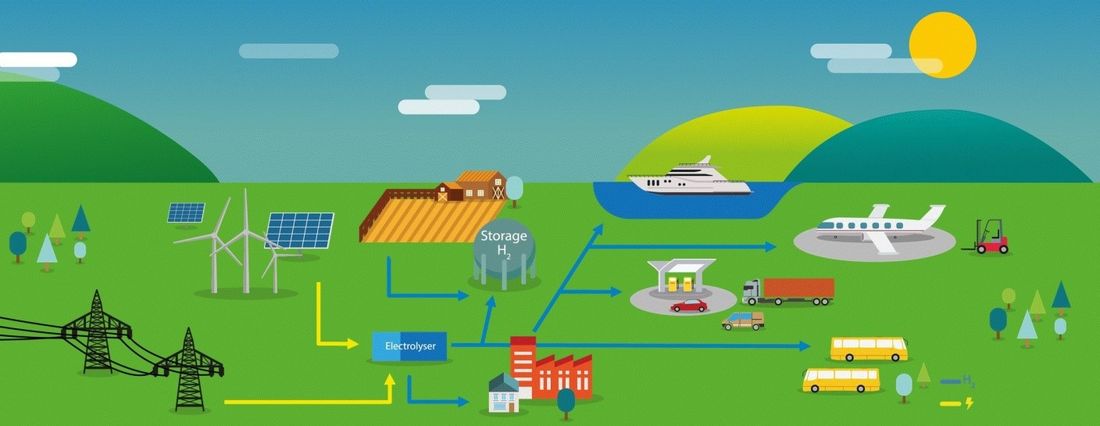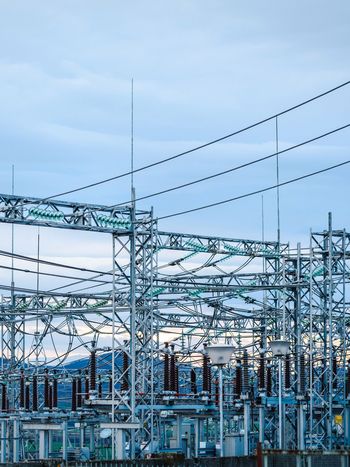Three driving forces that determine the future of green hydrogen application
Green hydrogen is presented at many occasions and in many ways as a 'silver bullet' solution for the integration of large scale intermitting renewable energy from wind and solar power into the energy system. It is in the end not to be expected that there will be technological blocking aspects for green hydrogen to play this 'silver bullet' role. From a technological perspective, however, there are still several and crucial aspect regarding production and transportation of green hydrogen that need to be further developed for a cost competitive application at market scale.

International Business Developer, TenneT TSO
From the perspectives of cost competitiveness, alternative technologies and implementation governance, there are also large and numerous complexities and conditions for green hydrogen application to play the silver bullet role. This article is based on the investigation on how three main driving forces will determine the future of green hydrogen application.

Figure 1 - Hydrogen economy (Source: Hydrogen Europe)
Before working this out, it is important to acknowledge that large scale green hydrogen application in the energy system of the future, requires a fundamental re-design of the existing energy system and also an holistic view how to reach and implement that. Part of the holistic view is that green hydrogen application can play a role in the decarbonization of the energy system, transportation, industry and built environment.
Green hydrogen application can play a role for stabilization of the electricity system in situations where there is too much electricity from Renewable Energy Sources (RES), e.g., wind and solar energy that at a certain quantity cannot be absorbed by the electricity grid. Surpluses of RES electricity production are then converted into green hydrogen. Converting RES-electricity production from solar- and wind energy (both on-shore and off-shore) into green hydrogen can also address grid connection issues and high-costs for grid operations and investments that electricity system operators are confronted with due to the increasing RES infeed.
Green hydrogen can also be used in the future electricity system as a carbon free energy source for electricity production during longer periods, for examples multiple days or weeks, if there is insufficient RES-electricity production. It can also be used for shorter durations with insufficient RES-electricity production, for example a number of hours, but there are also many alternatives to balance the electricity system for that application (e.g., demand-flexibility and batteries).
In addition to its possible uses in the energy system, green hydrogen application can also contribute to decarbonization ambitions in many other sectors of the economy, such as the chemical industry, the steel industry and for decarbonization of transportation and urbanized environments (e.g., heating and fuel cells). Green hydrogen is specifically interesting for such applications as full electrification of those sectors will be difficult, if not impossible, to realize.
To realize this full potential, development of an adequate green hydrogen infrastructure is required. Entirely new value chains need to be developed as well. Most of the capital-intensive investments required for this, have to be made by private companies that all need a long term profitability perspective in order to be able to justify it to their owners and shareholders.
The following three main drivers determine in how far green hydrogen application will develop in this context: (1) Cost competitiveness, (2) Alternative technology developments and (3) Implementation Governance.
Driving force 1 - Cost competitiveness
Green hydrogen application is currently not cost competitive in comparison to alternatives for the various application possibilities. Since hydrogen application does not bring substantial user advantages, it will not autonomously find its place in the market. Moreover, there is currently no hydrogen infrastructure, while a widespread and easily accessible hydrogen infrastructure is a key condition for developing a hydrogen marketplace with wide-spread hydrogen application. Development of the required new value chains and large-scale investments in new technologies by private companies will only happen if business cases are convincingly long-run positive.
Political and governmental actions and involvement are required to create momentum for green hydrogen application. Demand stimulation, higher pricing of CO2 emissions, and development of hydrogen infrastructures are crucial aspects of creating such momentum. The long-run profitability perspective that is required for private companies, and that is a requirement for large scale green hydrogen application, is something that can be addressed via political and governmental measures, such as sustainability financing schemes, i.e., CO2 pricing and protection measures on European markets against imported products produced via cheaper and less sustainable ways.
Hydrogen application in chemical industry or heavy transport can logically be expected to develop first, and if hydrogen demands grow in these industries, the hydrogen supply will likely first come from hydrogen produced with fossil fuels as this is currently much cheaper than green hydrogen production. It will come from so-called 'grey' hydrogen, produced from natural gas with CO2 emission, or from so-called 'blue' hydrogen, which is produced from natural gas, where CO2 emission is captured and stored.
Today, green hydrogen production in Europe requires improvements for cost competitiveness. However, with stimulation measures for European green hydrogen production that can lead to cost reductions, and also with an expected growth of global 'green' hydrogen markets (from places where green hydrogen can be produced cheaply due to superfluously available RES-electricity), green hydrogen could get a dominant position in the longer run development of a global hydrogen market.
Driving force 2 - Alternative technology developments
The scale and roles of green hydrogen application also largely depends on developments of other technologies. Development of battery technology developments (e.g., higher energy density at lower cost), the role of nuclear power in the energy system, and many other new innovative technologies (e.g. alternative technologies for large scale storage and flexible re-usage of RES electricity surpluses) will impact the final roles and scales of green hydrogen in the decarbonization of the energy system. It is obvious that both the impact and the uncertainty of this driving force are big.
Driving force 3 - Implementation governance
The required large-scale re-design of the energy system needs to take place via development of a new dedicated hydrogen infrastructure and entirely new value chains. This requires consistent and optimal alignment between politics/governments at various levels, such as between policy and decision making at EU-level, national country level and at local level within the EU countries (e.g. municipalities). It will also require optimal alignment with private companies in this implementation context and ensuring broad societal acceptance. It will be challenging to reach such full consistent and optimal alignment for the implementation governance.
The three mentioned driving forces are surrounded with high uncertainty and the possible impacts of the driving forces are high as well. This makes that the future for green hydrogen application is difficult to predict and influence.
Based on the three main driving forces described in this article, a next and more detailed CIGRE publication is planned to be submitted to CIGRE Science and Engineering in the next months, which will focus on the impacts and uncertainties of the three driving forces lead to four distinctive scenarios how hydrogen can be applied in the decarbonized future energy system. These scenarios can be used by actors in the energy system to prepare an operational- and investment strategy that is robust for the various plausible futures that could develop towards the future.
Thumbnail credit: Malcolm Lightbody on Unsplash



